Quietly, I waited without a move. The next attack on the castle walls was imminent, but I didn’t know exactly when it would be. Locked and loaded, I aimed and was ready to fire.
I sat entrenched on the beach; butt firm in the sand, knees up, heels dug in. My elbows sat on my knees, hands firmly grasping my camera, camera plastered against my face. I barely breathed, waiting, watching, as I did my best to impersonate a human tripod. It was a slow shutter speed, and I didn’t want to shake the camera.
The target: a castle, a bulwark on the island of Grand Turk, made of sand. The attacker: the evening tide, coming in the swallow anything that dare stand in its way. My challenge: capture the attack, the waves climbing the castle walls, timing the shot just so.
It took a few tries. Usually, the wave coming in wasn’t big enough to have an impact. But finally, a dreadnought of waves, a castle killer rolled in and I fired my shot.
(Click on any picture for a larger view)
The castle survived the wave, but much diminished. The next morning a visit to the spot showed no sign of it. Time and waves and erosion erased it, a fast forward version of the relationship between nature and man.
* * * * *
I stormed Grand Turk in other ways as well. I’ve already written of diving its reefs, and of hanging out with its whales, its stingrays, and its Queen Conch. But there were other excursions: walks into Cockburn Town, a drive around the island.
You might think from what I’ve written so far that Grand Turk is the Garden of Eden.
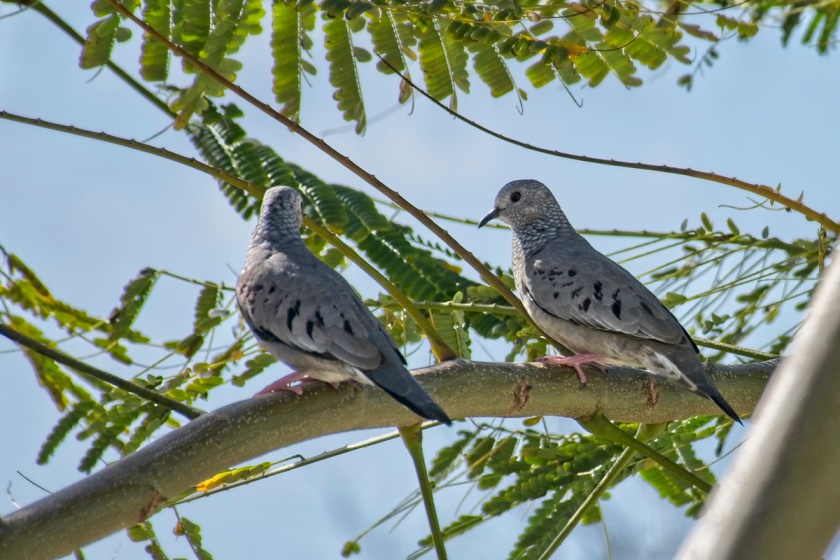
In some respects that’s true. But it’s not all beauty and sunshine. While at its core there’s a pure nut of goodness, it has its pricklier aspects.
The reality is many of the natives aren’t well off. While there is a mix, not all neighborhoods present a resort-like countenance.
Donkeys roam wild. They’re a leftover from earlier days, when they used the island to harvest salt.
Earlier still, the island may have been the original landfall for Columbus and his crew. Historians don’t know for certain what island he actually landed on; the natives called it Guanahani. A more popular theory has Columbus landing on Salvador Island in the Bahamas and one of his ships, the Pinta, making an excursion that landed on Grand Turk.
In either case, the original people were the Taino and Lucayan tribes, who also populated the Bahamas and other islands in the area. As Columbus wanted to believe he’d made it to India he called these natives Indians, a moniker new world natives have sported to this day.
I’m not sure what real Indians think of this.
Getting discovered wasn’t the happiest of accidents for the natives. Because of slavery and disease, Grand Turk’s native population was wiped out by the early 1500s.
Things were quiet for the next couple hundred years, when the Bermudans (settled by England) decided Grand Turk was well suited for “salt raking”. Initially, this was a seasonal thing, but eventually the Bermudans, both slaves and freemen, settled the island. Other slaves were imported for sisal farming. The descendants of these folk are today’s natives.
Salt harvesting was brutal, but profitable due to its use as a preservative, and harvesting continued until the 1960s.

Salt is harvested by letting sea water into shallow ponds via sluice gates. Trade winds evaporate the water, and the remaining salt is raked up. They used donkeys to transport the harvested salt to ships. The island was deforested to make evaporation more effective, and it remains flat and deforested today.
Because of the value of salt in this era, various European and local powers vying for it made for a messy political history. From the sound of it, it’s still a mess. These days the Turks and Caicos are autonomous, still a British Commonwealth country, and use US dollars for currency. Go figure.
Some ponds remain, but others work them.
From 1950 to 1981, the United States had a missile tracking station on Grand Turk. After his three earth orbits in 1962, American astronaut John Glenn successfully landed in the nearby ocean and was brought back ashore to Grand Turk island.

Tourism has become the main driver in Grand Turk’s economy. Cruise ships drop in regularly. Folks like me come for the diving. And some come, looking for a quiet place to stay with a nice beach and clear, warm waters.
And at day’s end and at trips end, when tasks and excursions are done, it is good to sit back, relax, and contemplate the good things in life.



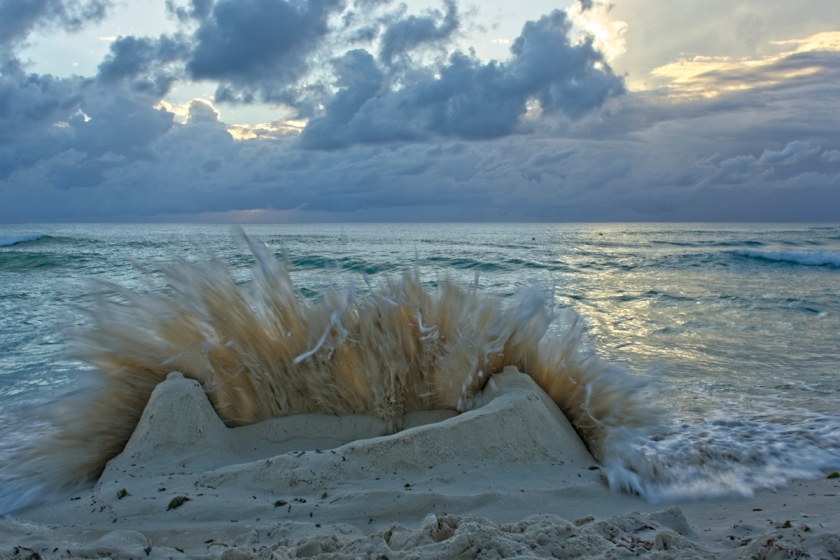
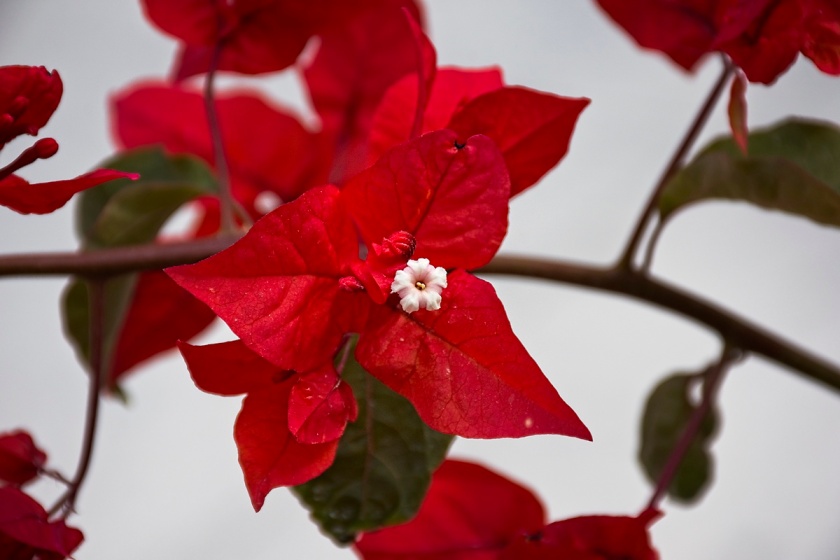
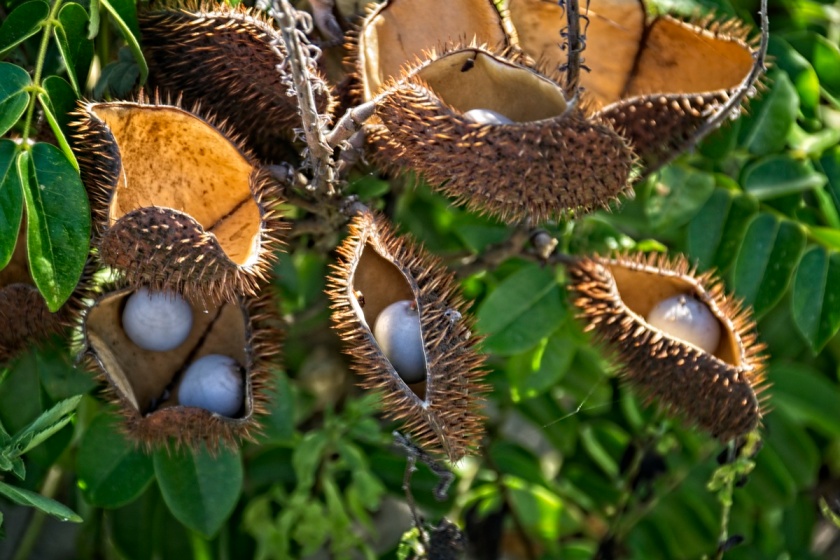


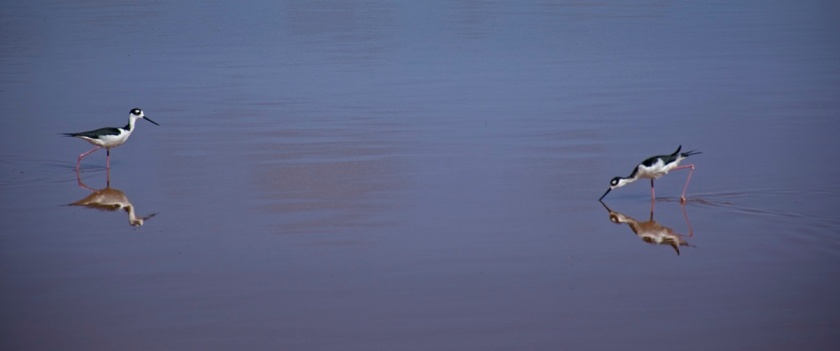
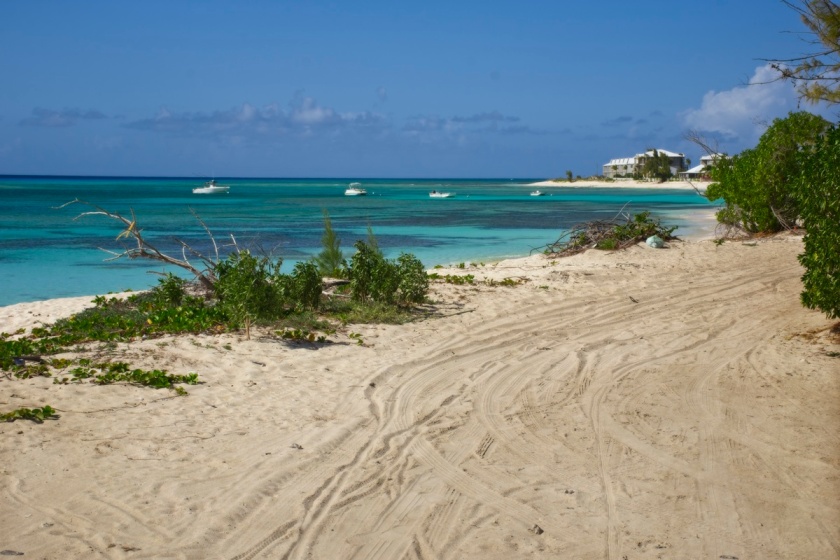

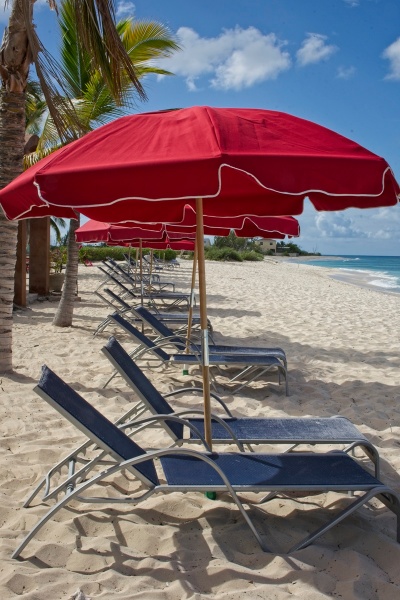
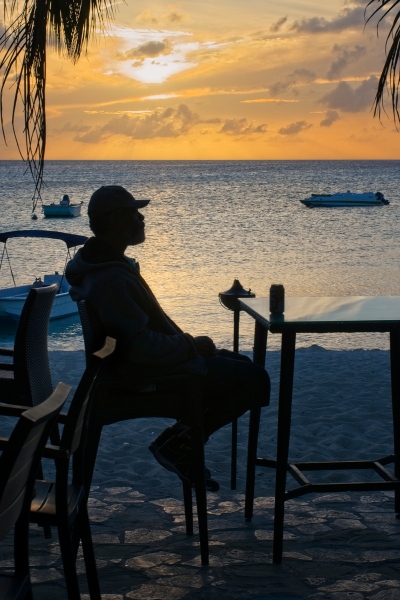
Very creative piece in which you describe the attack on the castle! Interesting how you become the tripod for this amazing shot of the incoming wave! Great photos!
LikeLiked by 1 person
I fear I may have put a few people off with my “violent” prose. Too creative? It’s just a spin on a sand castle.
LikeLiked by 1 person
How can something be too creative! Let your creativity blossom, Dave.
LikeLiked by 1 person
I loved the way you opened this post ~ I didn’t expect any of it, which made it perfect…and great photo too! You show many sides to the Grand Turks in this post, which shows you’ve experience much of the place and culture – of course my favorite shots were your final four. Makes me relax and wish I was there… Cheers to a great day ahead.
LikeLiked by 1 person
Cheers, Randall. I wasn’t sure what direction to take this post, it’s sort of a catch all. Thought the sand castle shot might make an interesting tale, although I suspect the last shot would have been better click bait.
LikeLike
I love the silvery shimmer to the sea and sky. I also noticed during my trips to the Caribbean that tourism money often doesn’t make it to the locals. I love the way they manage to savor their life in paradise in spite of this. Gorgeous images, as usual.
LikeLiked by 1 person
Even though the cruise ships make regular landings, there’s a center built by the cruise line that probably grabs a big chunk of what cash does get spent there. It seemed like the resort had a pretty good sized staff, hopefully they pay well. As you imply, money isn’t the key to happiness, attitude is. (But money does it make it easier).
LikeLike
Oh my goodness, I’d say you timed that photo of the attack VERY well!! 🙂
LikeLiked by 1 person
I didn’t even cheat and use a continuous shutter. One shot per decent wave. 🙂
LikeLiked by 1 person
Wow, that is very impressive! Well done!
LikeLiked by 1 person
That is in incredible picture! And I liked the other ones, too. It is true that so many of the island are beautiful for vacationers, but the locals often struggle to make ends meet. And their history is disturbing, to say the least. Slavery was just plain evil.
LikeLiked by 1 person
To be fair, some of the locals in my own city also struggle to make ends meet; we have more than our share of homeless.
Mankind’s history is pretty dark. You’d think we’d be more enlightened by now, but I have my doubts…
LikeLiked by 1 person
Me, too. Human nature isn’t always pretty. And you’re right about all societies having their own dark histories. All we can do is be as positive and kind as we possibly can.
LikeLiked by 1 person
The wave attack photo is amazing! I actually thought the spray was some sort of dune grass when I first looked at it. I also love the picture of the gate in that wondrous shade of blue, and the sign is icing on the cake.
LikeLiked by 1 person
The wave picture doesn’t look like much at first glance, but a closer look is more interesting. I got a good chuckle from the sign. 🙂
LikeLike
Ah, time and tide wait for no man … though you picked the right moment, Dave!
LikeLiked by 1 person
Timing the tide? Waving at the sand castle? It was a good time.
LikeLiked by 1 person
Initially when I glanced at the image atop this essay, I thought it was a bank of tufted beach grass…….on sort of mounded-up sand. Had the weirdest sensation of not getting my brain to process it differently even once I realized what I was looking at. Always really enjoy stop motion. Image of the donkey wandering through the neighborhood is my favorite. How often did you see them like this? Enjoyed this brief accounting and history of Grand Turk, as told by you.
LikeLiked by 2 people
Given the ho-hum response this post seems to be getting, I suspect a lot of folks it was just a ho-hum picture of beach grass. You’re the second to mention it. Maybe I should have led with the sunset.
There was a group of four or five donkey’s that seemed to roam the area. On other parts of the island I didn’t see as many. I wonder what you’d think of the less “polite” picture of a donkey I got? Let’s just say he was also hanging out in the neighborhood.
LikeLike
Thanks for this quick tour around. Love the last photo.
Great capture of the storming of the castle. Perfect timing.
LikeLiked by 1 person
I saved the last photo as the series ender, seemed a nice way to say goodnight. I got a little lucky with the timing, but I suppose there were several fractions of a second that would have been good.
LikeLike
Good things in life, indeed! Love your shots of the castle, but the beach scenes are more my thing. 😉
LikeLiked by 1 person
This probably would have been a more popular post if I’d have started with the beach scenes, especially the sunset. But casting around for a title and a theme seemed more interesting via the “storming the castle” approach. Typical guy thinking, forgetting that WordPress is mostly women.
LikeLiked by 1 person
I liked how you explored other aspects besides the usual “paradise” rhetoric here, Dave. My other half has spent quite a lot of time in the Caribbean and often remarked at how poor locals can be and how shocking the difference in income can be between the likes of Branson and the average Joe (which makes that Fyre-fraud festival all the more infuriating). Columbus’ also quite a poignant point. It doesn’t happen often to say that somebody had effectively extinguished a people. Perhaps the first genocide in history.
LikeLiked by 1 person
It was starting to feel, based on the comments I got on the earlier Grand Turk posts, that folks were thinking the place was a paradise on earth. While I like to emphasis the positive, it wasn’t the whole story, especially historically.
I don’t know that the genocide was directly Columbus’ doing, but once the Europeans got involved and brought their diseases and slavery, it’s astonishing how fast the natives died out. In either case, I doubt it was the first genocide. Mankind’s homicidal tendencies go way back.
LikeLiked by 1 person
Such a well done report on an interesting slice of the Caribbean. When I lived in New York, I traveled to several other islands, (Jamaica, St. Martin, etc.) but never that area. I’ve always loved the islands – all of it, the “good” and the “bad.” I like your inclusive view, and beginning with that fabulous shot of the sand castle being stormed is brilliant.
LikeLiked by 1 person
Thanks, Lynn. I suppose everyplace has its good and bad aspects. I’m glad you’ve had the chance to enjoy the area too.
LikeLiked by 1 person
These pictures are so beautiful, it makes me long to go back! And that shot of the sandcastle–wow! Thanks also for the history lesson:-)
LikeLiked by 1 person
I’m glad to bring back good memories for you. Aren’t triggering good memories and bringing entertainment good reasons for blogging?
LikeLiked by 1 person
Absolutely 😊
LikeLiked by 1 person
This is why you’re one of the best, Dave.
Well done.
LikeLiked by 1 person
Thanks, Hook. Guess the siege was successful. 😉
LikeLike
As others pointed out above, I thought it was sea grass used as a foreground subject. I kept looking for a castle in the background and was puzzled. So it’s to your credit that the image is as startling as it is. The other photos are great, too. And a great piece on T&C.
LikeLiked by 1 person
Yeah, if it was just sea grass it’d be kind of a boring picture. I guess that’s why this post didn’t really draw much attention – folks didn’t realize what they were looking at, as what it really is is not what you’d expect.
LikeLiked by 1 person
That was a good story, Dave. I also enjoyed the quality and variety of photos. Thanks for sharing.
LikeLiked by 1 person
Thanks, Brick. This one was a bit of a catchall, an excuse to show the more general aspects of Grand Turk.
LikeLiked by 1 person